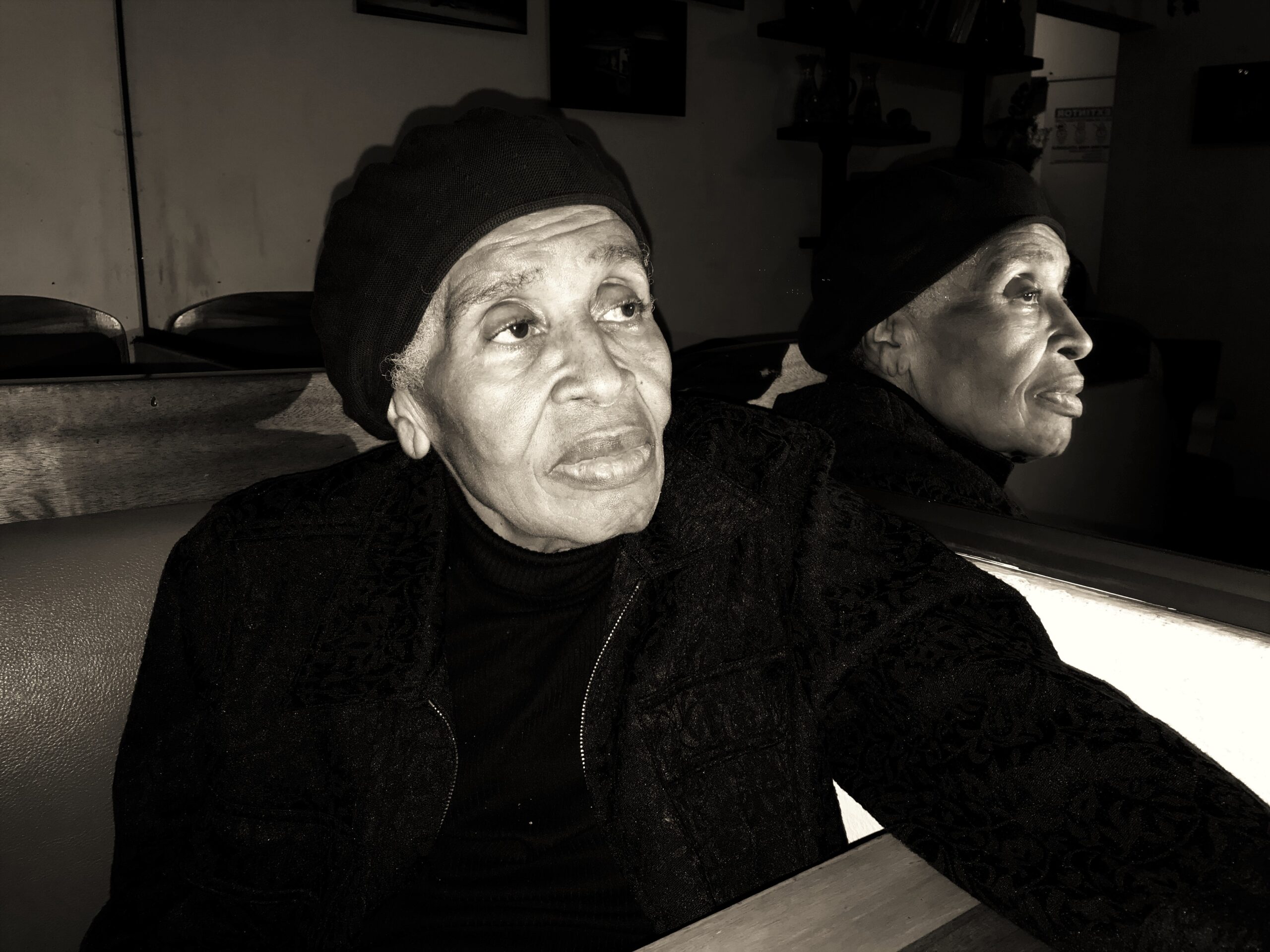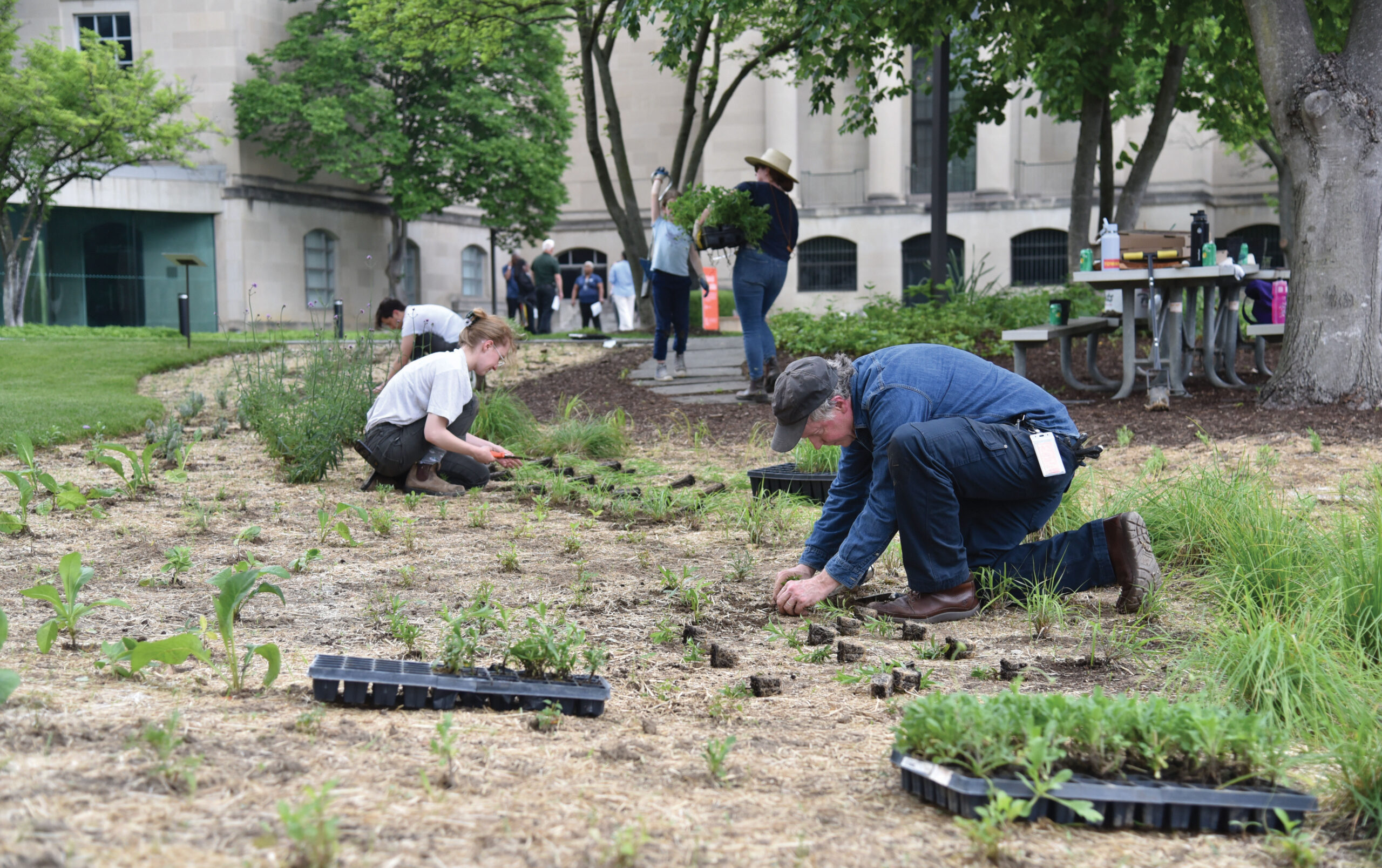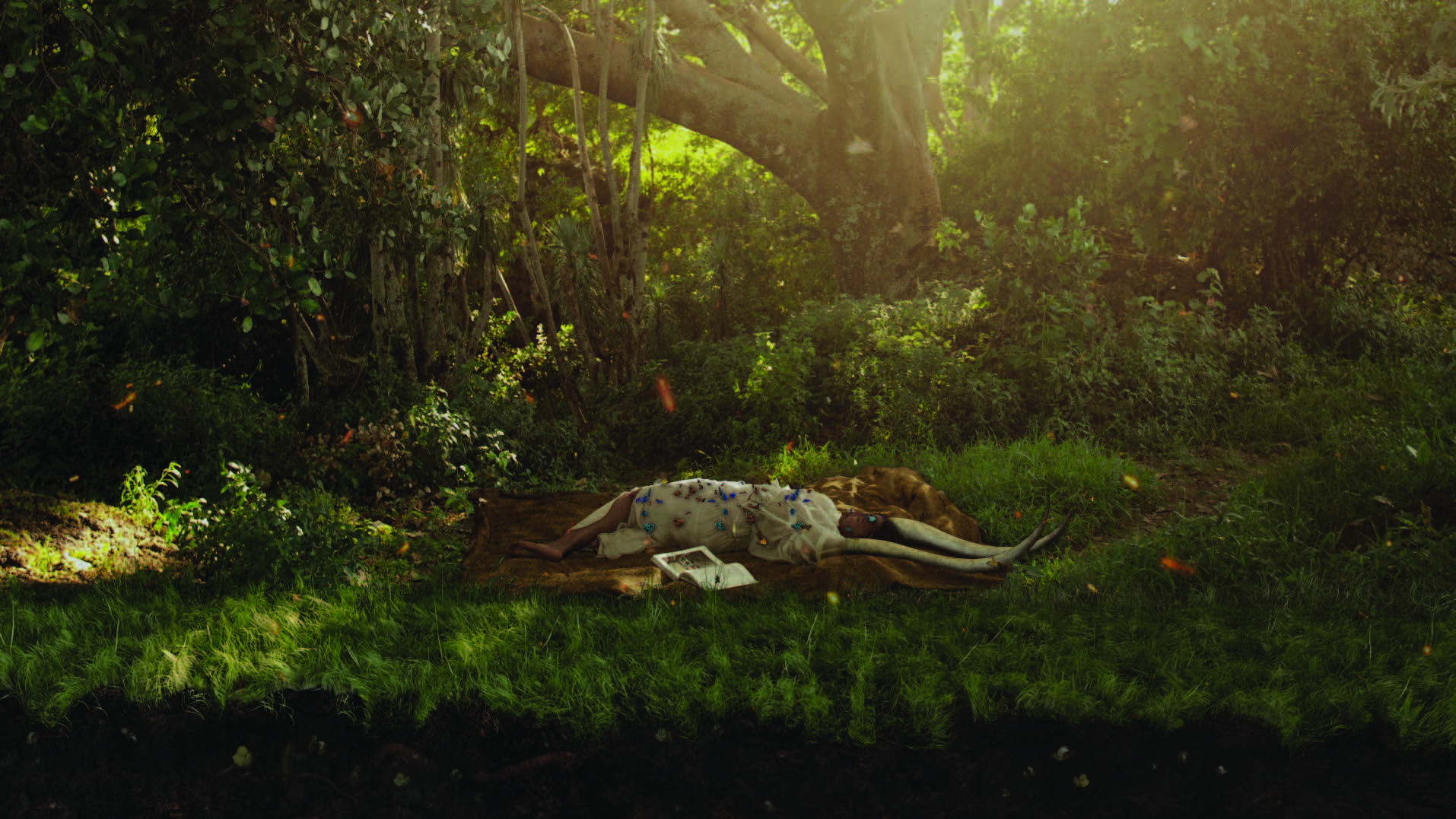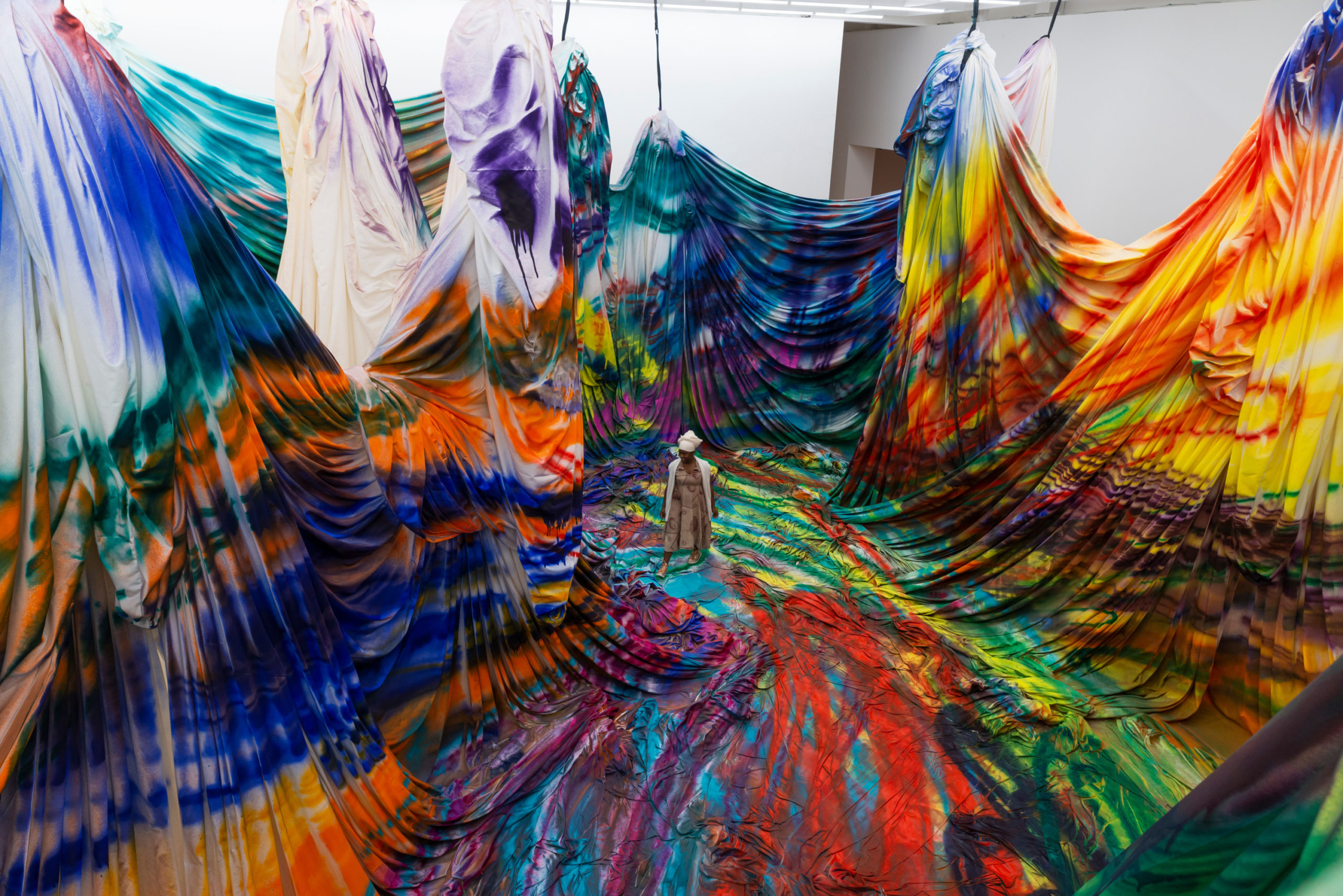
Looking at the work of Katharina Grosse
What?!
She made that with paint? That’s a lot of paint!
She did that on a house?!
These are the reactions I received when I showed my young daughters a photograph of Katharina Grosse’s Rockaway, the artist’s 2016 commission for MoMA PS1—a transformation of the derelict Fort Tilden aquatics center on Rockaway Beach. Their responses to the image of the abandoned beach-side building that Grosse covered in sprayed swaths of magenta, red, and white captures in a nutshell the reactions a viewer experiences upon first encountering one of Grosse’s pieces: surprise (“What?!“), then wonder at the material nature of the work (“She made that with paint?”), followed by an attempt to contextualize what we see within our own physical and conceptual frameworks (“She did that on a house?!”). By engaging a viewer’s eye, mind, and body, Grosse’s work demonstrates how the processes of perception are deeply intertwined and serves as a productive reminder of the generative possibilities of uncertainty and exploration.
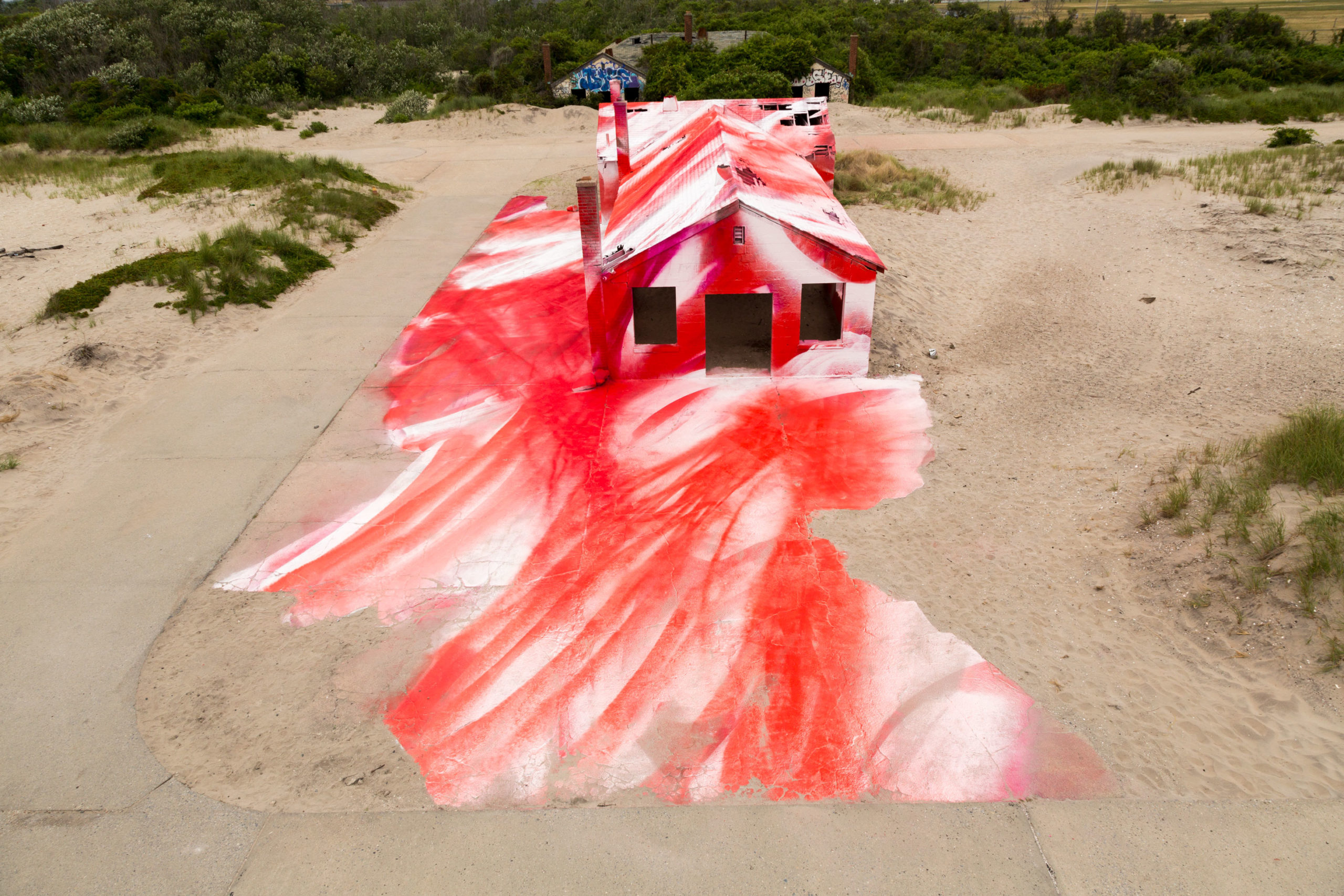
Photo by Pablo Enriquez. Courtesy the artist and MoMA PS1.
Grosse’s work elicits a jolt thanks to its fearless embrace of a color palette that has been described as “toxic sublime.” In Grosse’s paintings, opaque contrasting tones of bright acrylics are applied via an industrial spray gun across the canvas and also, in her installation pieces, across mounds of dirt, uprooted trees, carved Styrofoam sculptures, yards and yards of draped fabric, individual walls, and, yes, entire buildings. The artist layers the sprayed paint in passages that are sometimes airy and gauzy and other times sharply defined by the forms of stencils, which create jagged ruptures of color.
Her paintings have been compared to graffiti: the work begins with a graphic, visual impact; sometimes it’s paint where we think paint doesn’t belong. The artist refutes this comparison, stating, “Graffiti constructs a space and marks a claim of ownership; I depart from a space and make it uncertain.” Grosse responds to a particular situation and, in the words of curator Elizabeth Thomas, “trespasses with paint,” disrupting the viewer’s expectations of a specific site.
From surprise, one progresses to wonder. Most often, Grosse’s paintings are large in size, and the scale in her work is heightened by the gestural sprays of paint, which are simultaneously disembodied (with no sense of the artist’s touch) and expressive (as powerful bursts of color and sensation). Grosse’s paintings record speed, the accelerated rush of paint towards a surface and its impact. They also record gravity. Tiny particles of paint fly across the canvas and fall at an angle, tracing the minute hills and valleys of the canvas’ surface. Accumulated drips mark the passage of rivers of paint across and down a surface. The overall effect produces a sense of recorded energy, the passage of time, entropy, and a visceral sense of the sublime in the viewer.
“ … my input has the same importance as the input of the machine I employ, the paint, the time, the place, the studio assistants, and all the other factors that come into play.”
Grosse views herself as just one part of a collaboration with her equipment and the circumstances of production: “ … my input has the same importance as the input of the machine I employ, the paint, the time, the place, the studio assistants, and all the other factors that come into play.” This philosophical approach reflects the particular combination of the expressive and the conceptual in her painting practice.
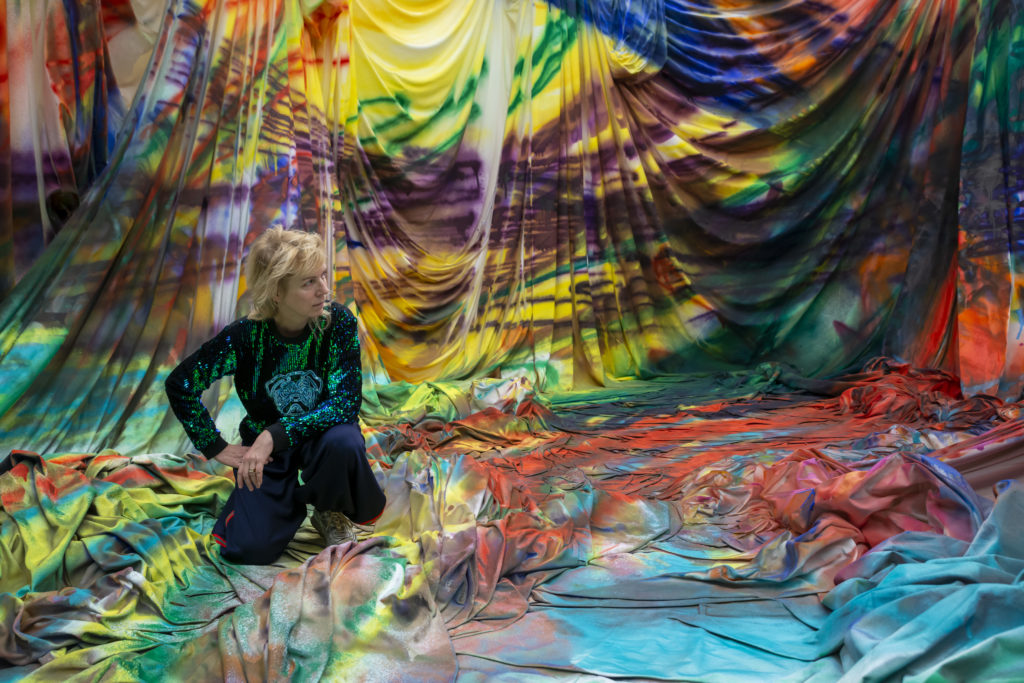
Grosse’s installation for the BMA, Is It You?, engages not only the optical but, even more so, the physical nature of looking at art. From the 1960s to the present day, conceptual artists from Yoko Ono to Dan Graham to Carsten Höller have produced maze-like works that directly address the viewer’s body: one must move through the work to fully experience it. But unlike those works, which rely on glass, metal, or plywood to create disorienting spaces, Grosse’s installation uses a visual language evocative of the kinetic environments of Jesús Rafael Soto or the draped paintings of Sam Gilliam to invite a physical exploration. The viewer steps into the toxic sublime and has to make sense of their perceptions, bringing vision and corporal presence into alignment.
Such exploration suggests new possibilities for viewing, thinking, and being. Grosse has been candid in interviews about the politically empowering possibilities of abstraction. “I definitely want my painting to elicit questions about how the world could be different…I find this form of flexibility interesting. We desperately need it. Without it, our society gets stuck and can’t solve its problems. Without this flexibility, we’re not even in a position to recognize the kinds of questions we can ask.”
Grosse’s work can be positioned within a lineage of artists who believe abstraction inspires a freedom of thought that is critically important in times that are dominated by absolutism: the Abstraction-Création artists working in France in the 1930s; the Asociación Arte Concreto-Invención artists in Argentina in the 1940s; American abstract artists in the 1950s; or the artists of the Dansaekhwa movement in 1970s South Korea, among many other examples across the globe.

Photography by David Muse
In our own day, artwork that stops us in our tracks, that encourages us to contemplate, to explore, can have its own power. The visual and embodied experience of Grosse’s painting might enable us to revisit our own physical and conceptual frameworks and question the world around us from a refreshed perspective. Within the BMA, this might mean reveling in the rich layering of color in the Henri Matisse paintings on view in the Cone Wing.
Upon stepping out into the city, this might mean encountering Baltimore’s abundant tradition of mural painting via the work of artists such as Ernest Shaw or Megan Lewis and reconsidering what it means to see paint in places we don’t expect it. Such encounters invite a heightened awareness of the strength and diversity of creative thinking in our midst. Grosse’s work offers the opportunity to recognize the kinds of questions we can ask, as we find our place within the different worlds at hand.
The BMA is temporarily closed in an effort to slow the spread of COVID-19. Katharina Grosse: Is It You? is curated by Virginia Anderson, Curator of American Art. A presentation of paintings in the exhibition is scheduled to be on view through June 28, 2020. The exhibition’s installation Is It You? is scheduled to remain on view through January 3, 2021.
The exhibition is generously sponsored by the Suzanne F. Cohen Exhibition Fund and J. P. Morgan Private Bank.


